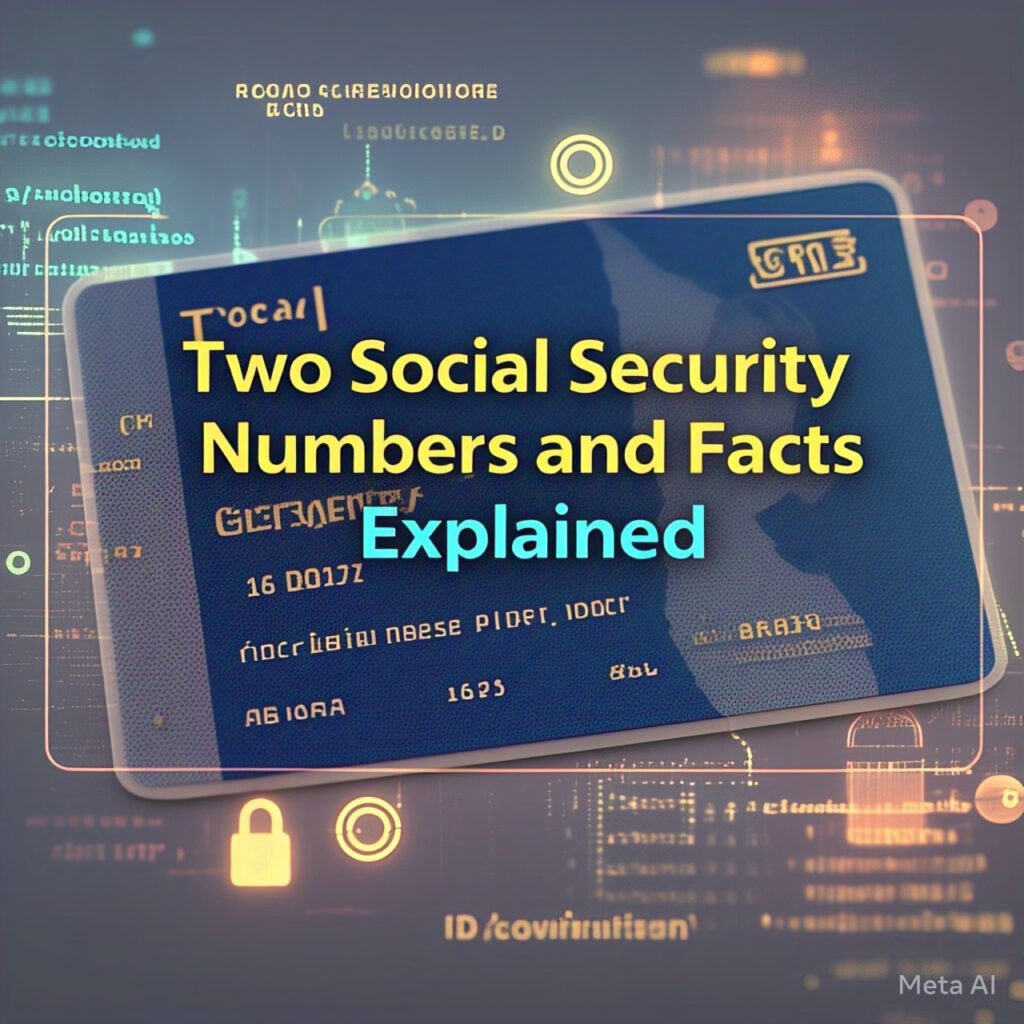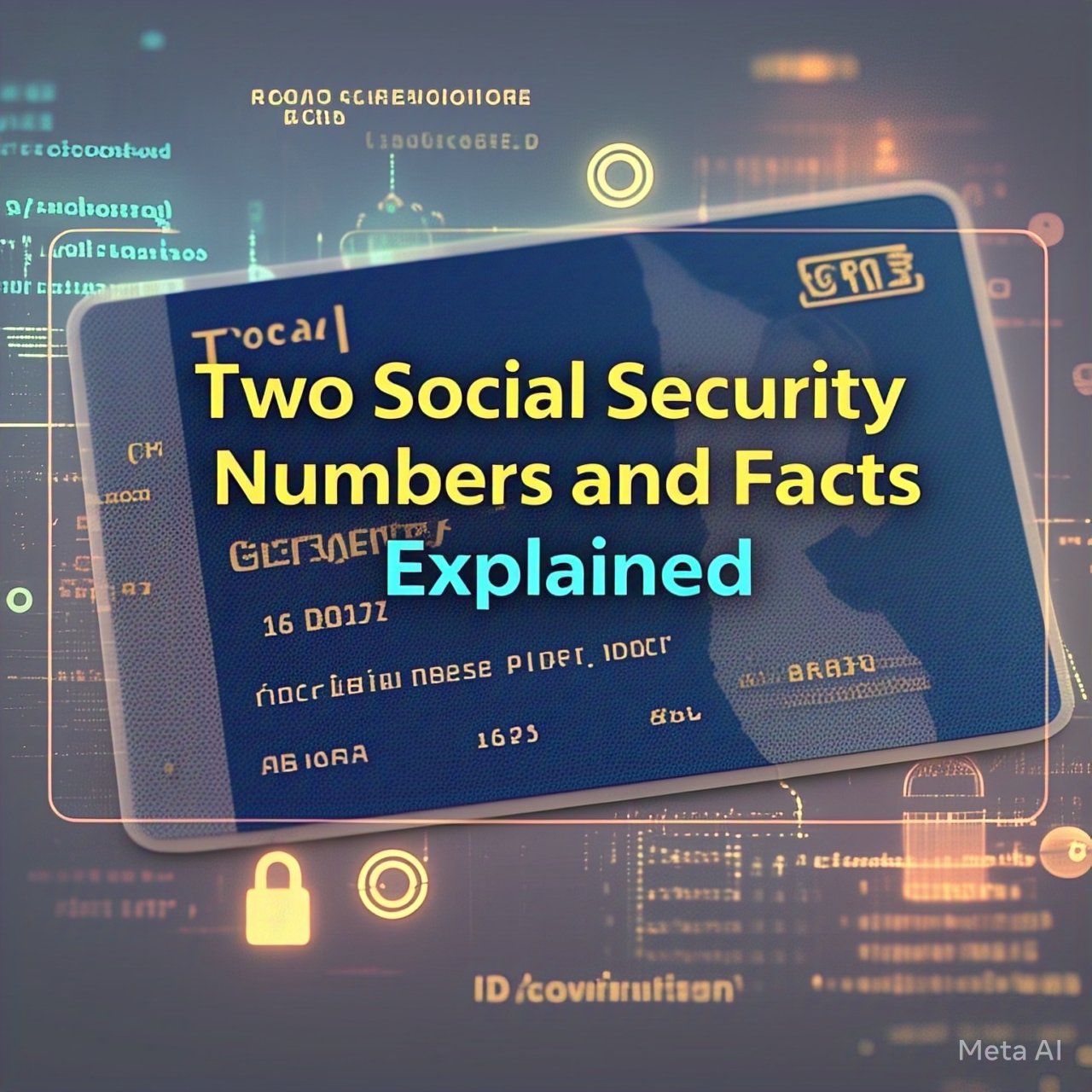The Social Security number (SSN) is a cornerstone of identity verification in the United States. But what happens when you hear claims that someone can have two SSNs? In this article, we’ll dive deep into the truth behind duplicate or multiple SSNs, debunk common myths, and clarify when—and why—a person might end up with more than one SSN. Whether you’re concerned about identity theft, record errors, or fraud, read on to learn the facts and practical guidance on this often-misunderstood subject.

Table of Contents
Understanding Social Security Numbers
Social Security numbers were originally created in 1936 to track individuals’ earnings for the Social Security program. Over time, these nine-digit numbers have become the de facto national identifier in the United States—used by government agencies, banks, employers, and even educational institutions.
- Structure of an SSN:
An SSN is formatted as “AAA-GG-SSSS.”
• Area Number (AAA): Historically, this indicated the geographical area in which the card was issued. (Since 2011, numbers are assigned randomly.)
• Group Number (GG): A set of two digits that once followed a specific, non-sequential pattern.
• Serial Number (SSSS): A four-digit sequence assigned within each group. - Why SSNs Matter:
Beyond Social Security benefits, SSNs are essential for filing taxes, opening bank accounts, applying for credit, and verifying identity in countless situations.
For more detailed information, visit the Social Security Administration website.
Can You Have Two SSNs? The Legal Perspective
Under normal circumstances, every individual is issued a unique SSN. However, there are a few limited scenarios where someone might end up with what appears to be two SSNs:
- Administrative Errors:
Rarely, due to data entry mistakes or legacy system errors, duplicate SSNs might be recorded. In these cases, the SSA typically merges the records to ensure all earnings are consolidated under one number. - Historical Exceptions:
In the past, certain groups (e.g., railroad workers) were issued separate numbers due to differences in benefit administration. This practice ended in 1963. - Victims of Domestic Violence or Identity Theft:
Individuals facing serious harassment or fraud may be granted a new SSN. The SSA allows a change if there’s compelling evidence of abuse, harassment, or persistent identity theft problems.
Key Point:
While a person may be issued a new SSN under special circumstances, they are not “allowed” to simply hold two active numbers simultaneously for the same identity.
Debunking the Myths About Duplicate SSNs
There are several persistent myths surrounding the possibility of having two Social Security numbers. Let’s separate fact from fiction.
Myth 1: “Having two SSNs means you’re committing fraud.”
Fact:
In most cases, duplicate SSNs are not the result of intentional fraud. Administrative errors or system glitches can sometimes create duplicate records. When discovered, the SSA corrects these mistakes to protect your record and benefits.
Myth 2: “Anyone who gets a new SSN ends up with two numbers permanently.”
Fact:
If the SSA issues a new SSN—for instance, due to identity theft or domestic violence concerns—the previous number is usually deactivated and merged into a single record. Only one number is used for tracking earnings and benefits.
Myth 3: “Multiple SSNs are common and a sign of system failure.”
Fact:
While high-profile cases occasionally make headlines, having more than one SSN is extremely rare. The SSA maintains strict controls and audits to ensure that duplicate numbers are minimized and corrected swiftly.
Myth 4: “Duplicate SSNs mean your Social Security benefits are at risk.”
Fact:
A duplicate SSN does not automatically jeopardize your benefits. In fact, if a duplicate is detected, the SSA’s standard procedure is to merge the records so that all contributions are properly credited to your unique SSN.
Myth 5: “Two SSNs can be used interchangeably.”
Fact:
If two numbers are recorded for one individual, only one is considered active by the SSA. Using the inactive number may cause discrepancies in employment records or tax filings, so it’s essential to resolve such errors immediately.
Myth 6: “Changing your SSN is a quick fix for identity theft.”
Fact:
While a new SSN can help reduce the fallout from identity theft, the process is rigorous. Applicants must provide evidence of the fraud and meet strict criteria set by the SSA, and the change is not done lightly.
Myth 7: “Duplicate SSNs are the same as having a stolen identity.”
Fact:
Duplicate SSNs may sometimes be a sign of identity theft, but they are more often the result of administrative errors. In any case, if you suspect an issue with your SSN, contact the SSA immediately for a thorough review.
The Facts: When and Why a New SSN May Be Issued
The Social Security Administration only considers issuing a new SSN under very specific, documented circumstances. Here are the primary reasons:
- Identity Theft:
If you’ve been a victim of persistent identity theft and your SSN has been misused repeatedly, you may qualify for a new SSN. However, you must demonstrate that your current number is causing significant, ongoing problems. - Domestic Violence or Harassment:
Victims of domestic violence or harassment may be eligible for a new SSN if the release of their current number poses a personal safety risk. - Administrative or Record Errors:
In cases where duplicate numbers are found due to system errors, the SSA’s internal processes will usually merge the records. If a mistake persists, the SSA may intervene to correct the error. - Special Cases (Historical or Occupational):
Historically, certain occupations like railroad work led to individuals receiving two numbers. This is no longer standard practice, but older records might reflect these anomalies.
Process for Requesting a New SSN:
- Documentation: You must provide compelling evidence such as police reports, restraining orders, or documented cases of fraud.
- In-Person Interview: Applications for a new SSN must be made in person at a local SSA office.
- Record Verification: The SSA will compare your new application with existing records to determine the best course of action, which usually results in a merged record.
For additional details on how to request a change, review the SSA’s guidelines.
Risks and Concerns with Duplicate SSNs
Even though the SSA takes great care to ensure each individual has one unique SSN, errors can occur. Here’s what you should know if you suspect a problem:
- Tax and Earnings Issues:
Duplicate records may lead to discrepancies in your earnings history, which can ultimately affect your Social Security benefits. It’s crucial to verify that all your employment income is being correctly reported. - Identity Theft Vulnerability:
Duplicate or erroneous SSN records can increase your risk for identity theft. Fraudsters may exploit these errors to open fraudulent accounts or apply for credit in your name. - Administrative Confusion:
If you are issued two numbers by mistake, you might face challenges with banks, employers, or government agencies that rely on your SSN for identity verification. Promptly correcting such errors with the SSA can help avoid these complications. - Impact on Future Benefits:
Inaccurate records might lead to underreported earnings, which could reduce your eventual benefit amount. Regularly checking your Social Security Statement can help you catch any discrepancies early.
Tips for Protecting Your SSN:
- Monitor Your Social Security Statement:
Use the SSA’s online services to review your earnings record and ensure accuracy. - Report Suspicious Activity:
If you notice anomalies in your records or suspect fraudulent use of your SSN, contact the SSA immediately. - Secure Your Personal Information:
Be cautious about sharing your SSN and consider freezing your credit to protect against identity theft.
For more detailed advice on protecting your identity, consider reading resources from reputable financial institutions or government agencies.
What to Do if You Suspect an SSN Error
If you believe you have been assigned a duplicate SSN or that there is an error in your Social Security record, follow these steps:
- Review Your Earnings Record:
Log in to your “my Social Security” account at ssa.gov to review your earnings history and confirm that all reported income matches your records. - Contact the SSA:
Schedule an appointment at your local SSA office. Bring all relevant documents, including pay stubs, tax returns, and any correspondence you have received regarding your SSN. - File a Dispute:
If you discover a discrepancy, you can file a dispute with the SSA. They will investigate and, if necessary, correct your records. Maintaining copies of all communications is essential. - Monitor Your Credit:
Since SSN errors can lead to identity theft, it’s wise to regularly check your credit report for any unauthorized activity.
Frequently Asked Questions (FAQs)
Q1: Can I legally have two SSNs?
A1: No. The SSA is designed to issue one unique SSN per individual. In rare cases where a new SSN is issued (e.g., due to identity theft or domestic violence), the previous number is deactivated and merged into your record.
Q2: What should I do if I suspect an error with my SSN?
A2: Immediately review your Social Security Statement online, and if you notice any discrepancies, contact your local SSA office with the necessary documents to verify your earnings and identity.
Q3: Under what circumstances can I get a new SSN?
A3: You may qualify for a new SSN if you are a victim of persistent identity theft, domestic violence, or if there is an administrative error that cannot be resolved through standard record correction.
Q4: Will having a duplicate SSN affect my Social Security benefits?
A4: If duplicates exist and are not merged, they can affect your earnings record, potentially reducing your benefit amount. The SSA works to merge records to ensure your benefits are calculated correctly.
Q5: How common are duplicate SSN issues?
A5: They are extremely rare. The SSA maintains rigorous controls to prevent duplicate assignments. When errors do occur, they are usually corrected quickly once identified.
Q6: Can duplicate SSNs lead to identity theft?
A6: Yes. Erroneous or duplicate records can increase the risk of fraud. That’s why it’s important to secure your SSN and monitor your credit regularly.
Q7: Does the SSA issue duplicate numbers for historical reasons?
A7: In very rare cases—such as for certain railroad workers before 1963—two numbers might have been issued due to administrative practices that are no longer in use.
Conclusion
While the notion of having two Social Security numbers may sound alarming, the reality is far less dramatic. The SSA is committed to ensuring that each individual’s record is unique and accurate. Duplicate SSN cases are exceptionally rare and are typically resolved quickly, whether they stem from administrative errors or specific circumstances like identity theft or domestic violence.
Understanding the facts behind SSN issuance and the limited circumstances under which a new number might be issued can help you better protect your identity and ensure that your earnings record remains accurate. Always stay vigilant about monitoring your Social Security Statement and don’t hesitate to reach out to the SSA if you suspect any errors.
Affiliate Disclosure
This article may contain affiliate links. If you choose to purchase through these links, we may receive a small commission at no extra cost to you. This helps support our work and keeps our content free.
Disclaimer
The information provided in this article is for informational purposes only and should not be considered legal or financial advice. Always consult with a professional for advice regarding your specific circumstances.







